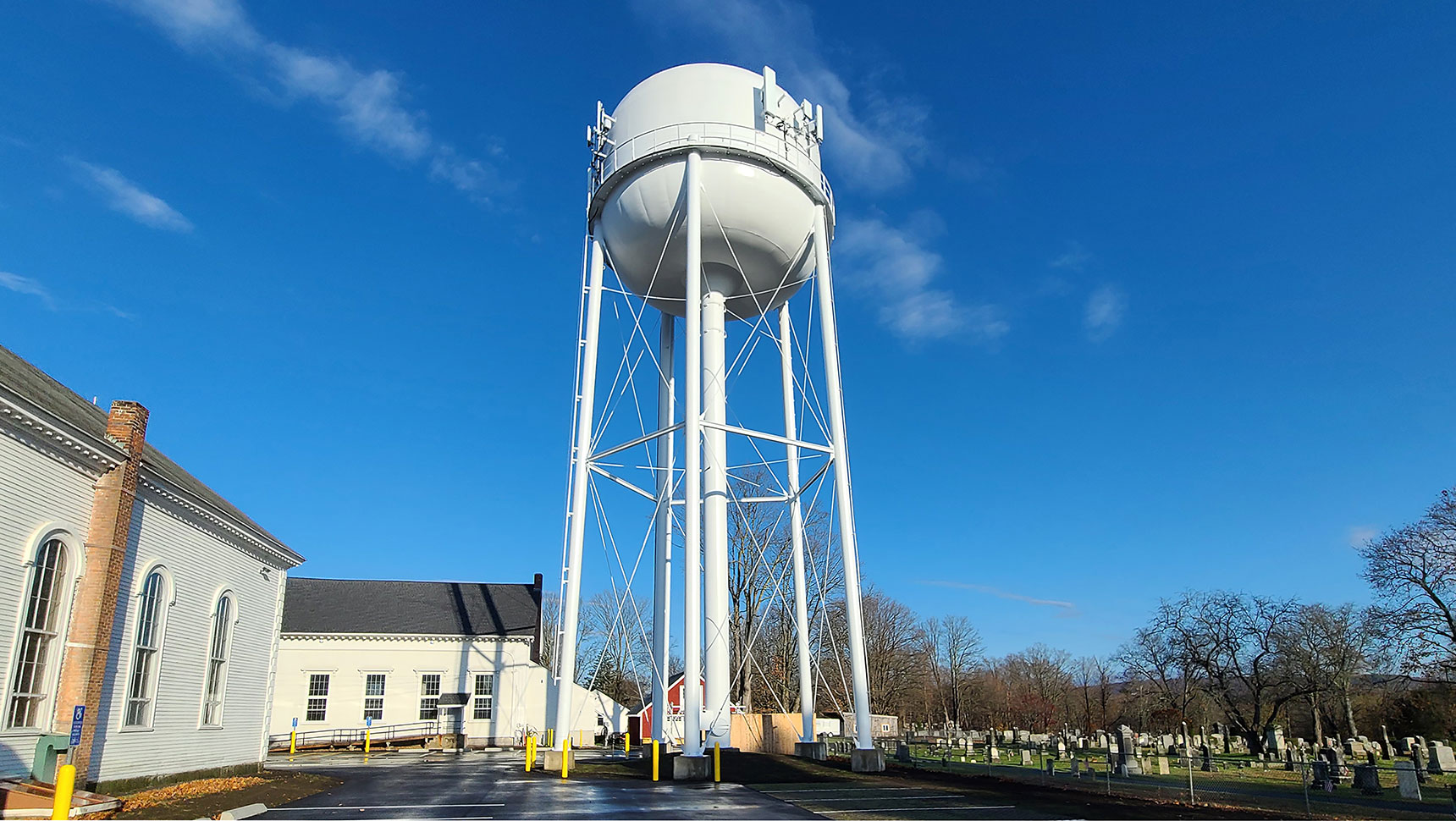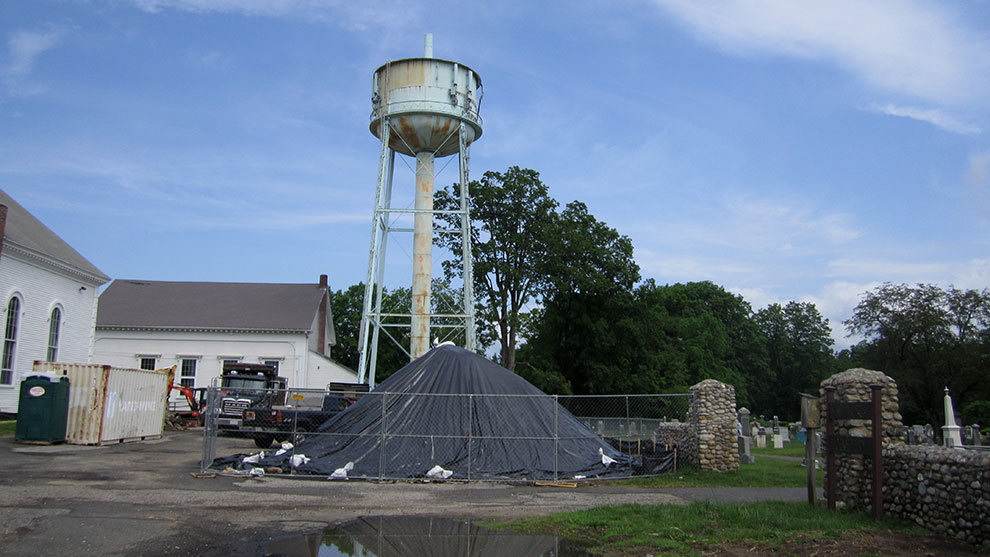Park Street Elevated Water Storage Tank Replacement


The Town of Belchertown, MA was experiencing challenges facing many communities: aging infrastructure and the need to implement changes due to the current and future effects of climate change. Fuss & O’Neill assisted the town in obtaining a Municipal Vulnerability Preparedness (MVP) Planning Grant to identify, prioritize, and implement solutions to improve their infrastructure’s resiliency.
As identified during a MVP Community Resilience Building (CRB) workshop, extreme weather and natural and climate-related hazards were potential vulnerabilities. Participants at the Belchertown CRB workshop identified water supply reliability as one of their top hazards and vulnerabilities.
The Belchertown Water District’s Park Street elevated water storage tank was greater than 100 years old and was in need of replacement, as the tank was both vulnerable to storm and wind damage and was undersized (100,000 gallons) based on recent system demands. Additionally, CRB workshop participants noted that the Town’s groundwater supplies were susceptible to drought, emphasizing the need to further reduce public water demand through water conservation and reuse.
Fuss & O’Neill helped the Town, in partnership with the Water District, receive Municipal Vulnerability Preparedness (MVP) Action Grant funding to design, permit, and construct a new elevated water storage tank. Fuss & O’Neill’s multidisciplinary team sized the proposed tank, completed local and state permitting, and prepared final design drawings and specifications for bid and construction.

Local approvals were received from the Belchertown Planning Board, Zoning Board of Appeals, and the Historic District Bylaw Commission, which wanted to maintain the Town center’s visual appearance and the integrity of the adjacent National Register-listed Belchertown Center Historic District. The new tank would be taller and larger than the previous tank and the Historic District Bylaw Commission wanted to maintain the aesthetic quality of the tank and its site by selecting the color and the site around the tank.
The Massachusetts Department of Environmental Protection also reviewed the proposed project and granted approval with conditions for water quality testing that needed to be met prior to, and during construction of, the new storage tank.
The design evaluation confirmed the need for additional water storage to meet the Town’s daily needs and to make provisions for fire flows and emergency storage during increased summer demands. Our team determined that the new tank’s volume would be 250,000 gallons to protect against increased usage during the summer and to include a buffer for future expected demand.
The water storage tank replacement project included green stormwater infrastructure improvements in the form of permeable pavement and an infiltration basin at the church parking lot adjacent to the tank site. These improvements mitigate surface runoff water quality and provide significant opportunities for public education and outreach at this highly visible site in the Town center.
Structural deficiencies in the old tank made the structure vulnerable to storm and wind damage. The new design provided additional structural members and cross-bracing, which made the tank more stable and protected against the new standards for wind and ice/snow loads. The new tank provided increased ventilation and mixing of water to protect against ice creation during reduced usage and movement during the winter months. The tank also included a control cabinet that measured the tank’s level and allowed for routine sampling and monitoring of the water level.
The replacement tank allowed the overall water distribution system to maintain system pressures and provide more reliability and redundancy during current and future peak system demands. This project corrected the hydraulic grade line (HGL); the existing tank had an overflow elevation that did not match the system’s hydraulic grade line, resulting in unusable water and storage in the existing tank. The replacement tank matched the HGL and regulated system pressures, which resulted in a more consistent system pressure and more available water storage and usage throughout the year.